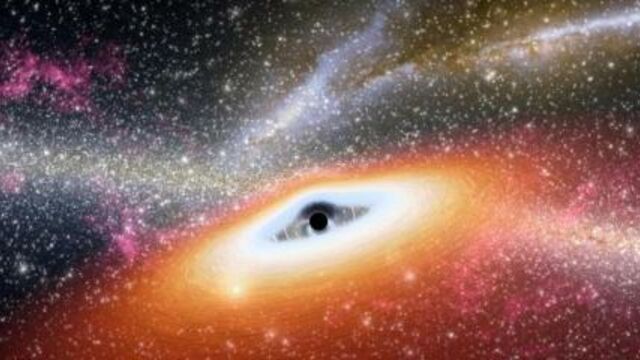Not all monsters eat fresh meat... For some, a cloud of gas is enough. But who are these singular ogres? Supermassive black holes.
Discover our latest podcast
In a study published in the journal Nature Astronomy, Israeli researchers reveal how a supermassive black hole begins to devour the gas around it. To do this, the scientists began their work by studying an event that occurred in February 2017. They called it AT 2017bgt, and it has been immortalized by the All Sky Automated Survey for Supernovae, a device consisting of two separate telescopes and intended to search for potential new supernovae.
A new type of event
Initially, some scientists believed that AT 2017bgt could be the manifestation of a star being "swallowed" by a supermassive black hole, a phenomenon otherwise known as a "tidal disruption event". But by looking more closely at the data collected by the All Sky Automated Survey for Supernovae, the Israeli team came to another conclusion: AT 2017bgt was actually the manifestation of a black hole "feeding" itself.
"The sudden brightening of AT 2017bgt was reminiscent of a tidal disruption event, but we quickly realized that this time there was something unusual: the first clue was an additional light component, which had never been observed in cases of tidal disruption events," says the first author of the works, Benny Trakhtenbrot from TAU's Raymond & Beverly Sackler School of Physics and Astronomy. An unusual event, as confirmed by one of the co-authors of the study, Iair Arcavi, who was in charge of data acquisition:
"We have been following this event for over a year with telescopes on Earth and in space, and what we have seen is like nothing we have seen before."
A theory confirmed by observation
One of the members of the Israeli team, Professor Hagai Netzer, was quick to connect these intriguing observations with theories he had constructed some forty years ago. "We predicted in the 1980s that a black hole swallowing gas in its vicinity could produce the luminous components observed [today]. [With] this new result, [this] is the first time the process is observed in practice, " says Hagai Netzer.
Upon discovering two other events comparable to AT 2017bgt, astronomers now dream of being able to discover many more thanks to the advanced equipment that is now available to them: "We hope to detect many more events of this type, and follow them with two telescopes at a time. It's the only way to complete our portrait of the growth of black holes, to understand what is causing them to accelerate, and perhaps to finally solve the mystery [surrounding] the way these giant monster are formed," Iair Arcavi concludes. Giant monsters that, surprisingly, do not eat fresh meat.
Check out the video above for more explanation!















